¶ Features
- Support creating custom filaments in Bambu Studio.
In the past, Bambu Studio provided limited third-party filament presets, users had to use "Generic XXX" for those third-party filaments, which brought lots of trouble to AMS mapping. Now, you can set up your own custom filaments right in Bambu Studio. In this release, Bambu Studio provides a handy way to create custom filaments directly in Bambu Studio.
You can create/delete custom filaments or create a preset for existing filament from the "Edit Filament" page. Detailed instructions are available on our Wiki.

Also, custom filaments could be chosen on X1 and X1C printers, and start printing as system filaments. The functionality will be available after the firmware update to version 1.6.6 (public beta version, will come out soon)
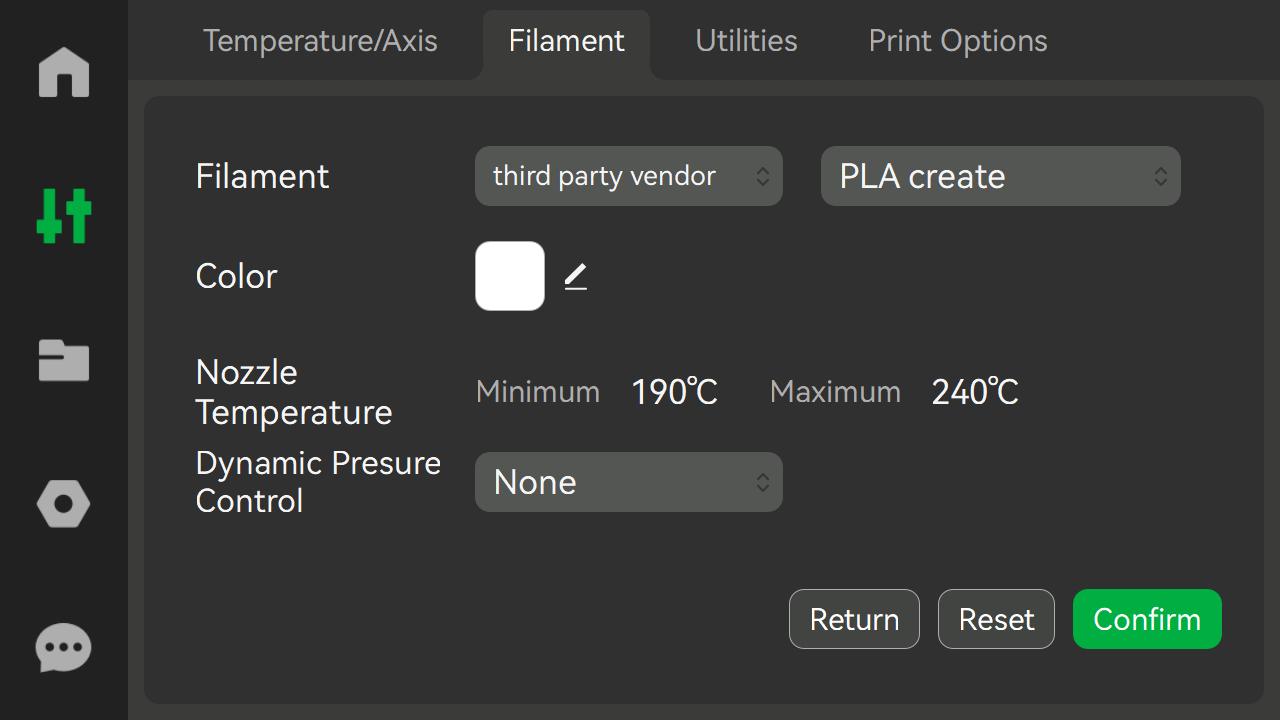
- Support creating custom third-party printers.
Previously, when Bambu Studio did not support certain printers, or if users sought to enhance their printing quality by altering the printer nozzle, the requisite manual adjustment of printer profiles was cumbersome. To address this, we have introduced an automated function that facilitates the creation of necessary printer presets. This functionality can be accessed via the designated function entrance detailed below. Once created, the custom printer presets will be organized within the 'User Presets' category. Comprehensive guidance on utilizing this new feature is provided in our Wiki.
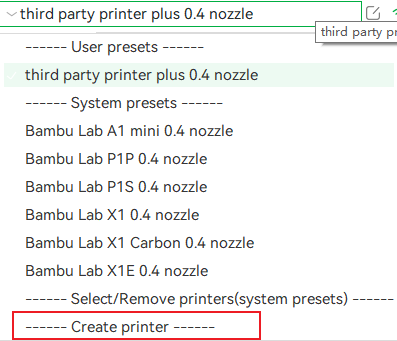

- Support exporting and importing printers' profiles, filament profiles, and process profiles.
You may share profiles with others by these way offline.
The function entrance shown in the left picture. The right shows the export UI. Please check the Wiki page for details.
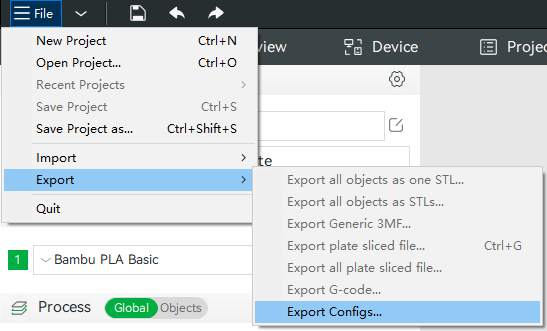
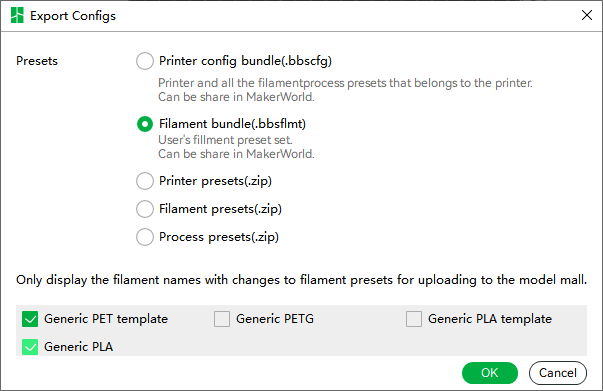
The import configs feature now supports four different file types, namely .json, .bbscfg, .bbsflmt, and .zip.

- Support Bambu A1.
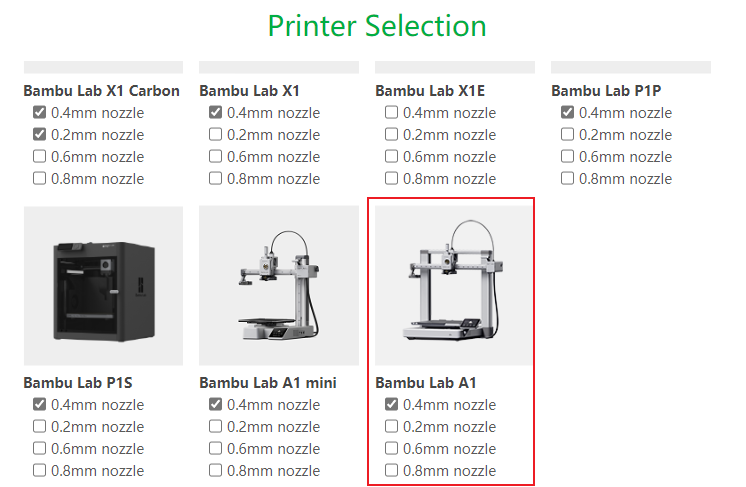
- Support auto flush calculation function.
In multi-color printing, users often neglect to compute filament flush volumes or forget to recalculate them when switching filament colors, leading to print flaws. To address this, Bambu Studio has introduced an automatic flush volume calculation feature. Whenever you add a new filament or change filament colors, the flush volumes will automatically update.
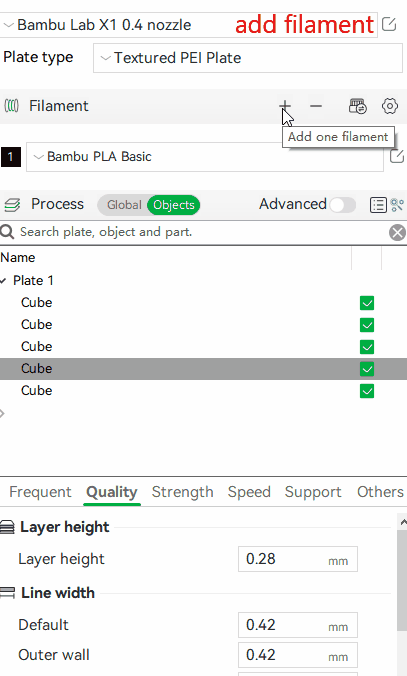
- No popup while sending to print if the P1P installed P1P to P1S upgrade kit.
In this release, if you've installed the P1P to P1S upgrade kit and are sending a print job with the machine preset as P1P, a compatibility reminder will appear. However, if the preset is P1S, this reminder won't show up. This feature will be functional after updating the firmware to version 01.05.00.00, which is the upcoming public beta version.
- Auto-arrange objects to the middle of the plate while switching the printer profile.
You might have been frustrated by the need to manually arrange objects on the plate when changing the printer profile. But worry no more. Now, objects will automatically position themselves on the appropriate plates upon changing the printer profile.
This GIF illustrates the clutter that used to happen after switching the printer profile in earlier versions

This GIF shows the auto-arrange function in this release.
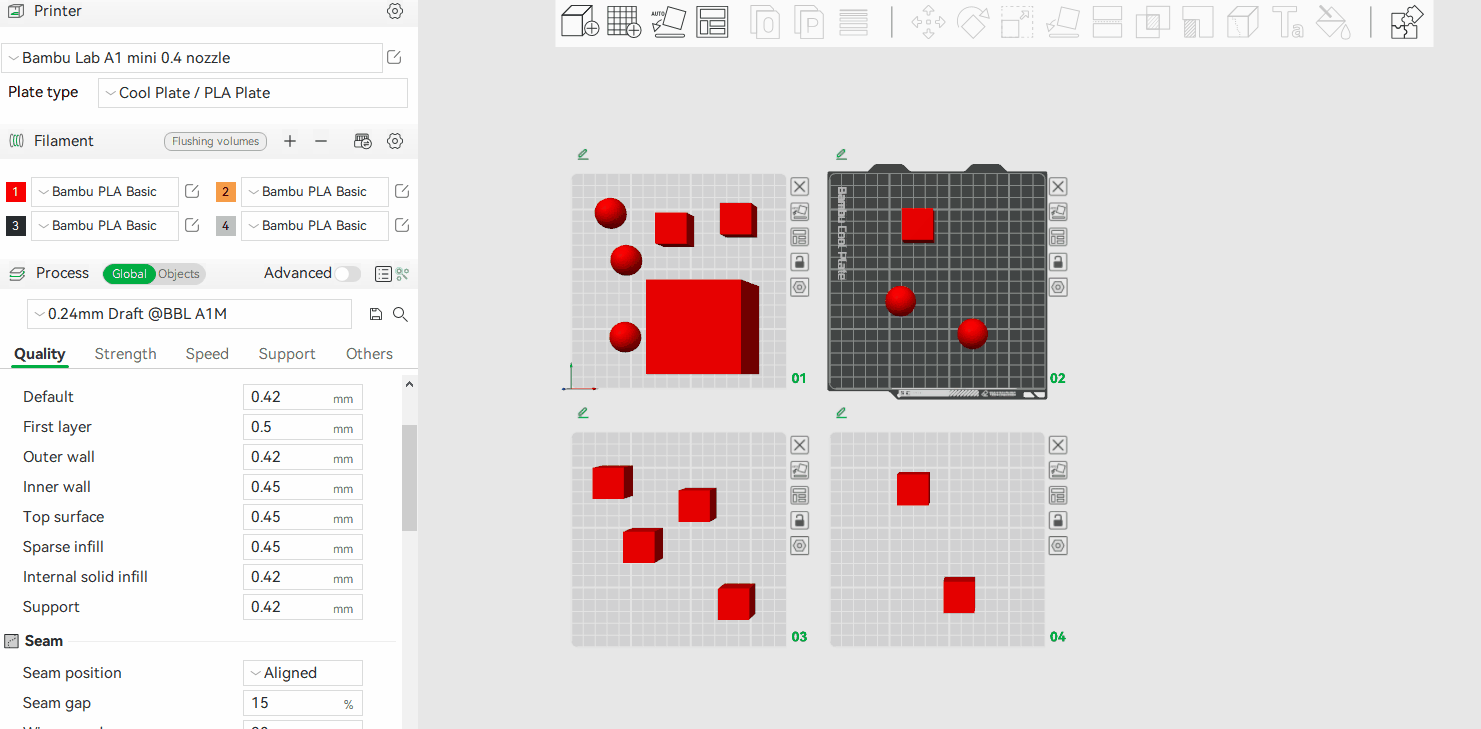
- Add connector function in split tools.
The cut tool in Bambu Studio has been upgraded to offer new features, including the Snap connector and dovetail cutting, alongside improvements to the existing flat cutting capability. This enhancement includes code adapted from PrusaSlicer, and we acknowledge the efforts from PrusaSlicer and the contributors @YuSanka, @enricoturri1966
Snap connector:
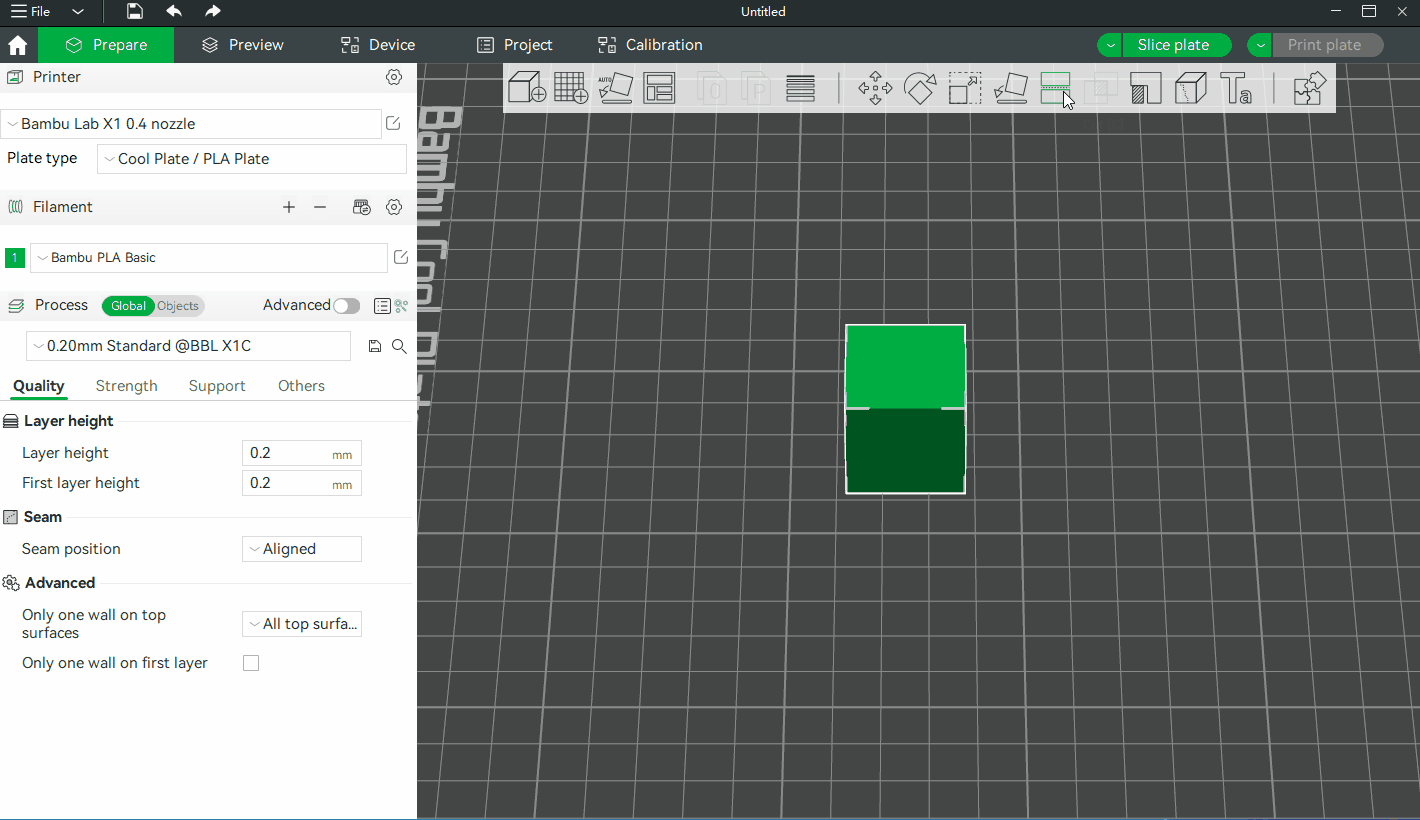
Dovetail cut function:
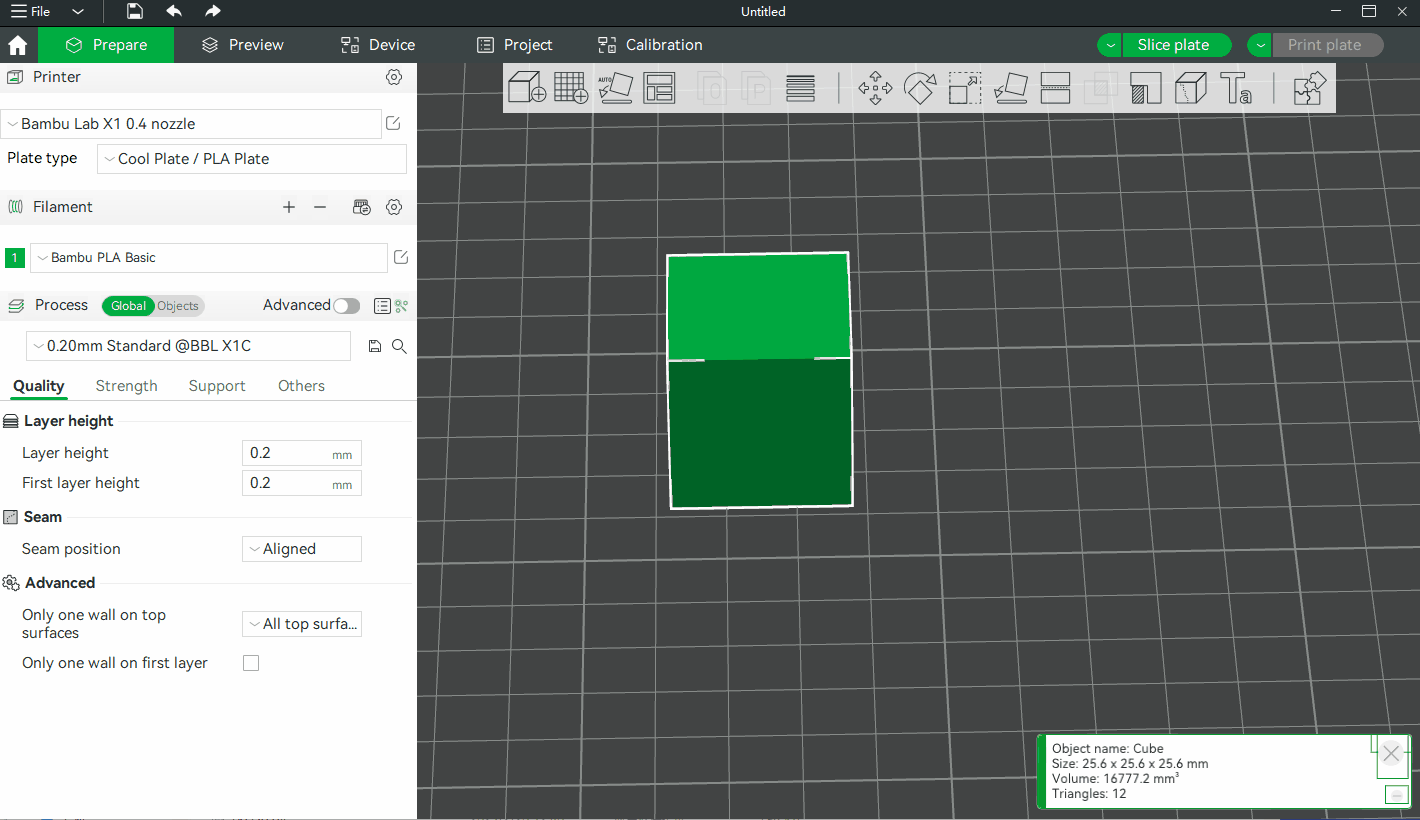
¶ Improvments
- Improve speed of auto lift type detection.
Use the model "aquatic dragon" in MakerWorld from @davidkelly021 as a test. This improvement reduces gcode export time by about 12s. The left picture shows the original time cost, the right shows the improvement result.
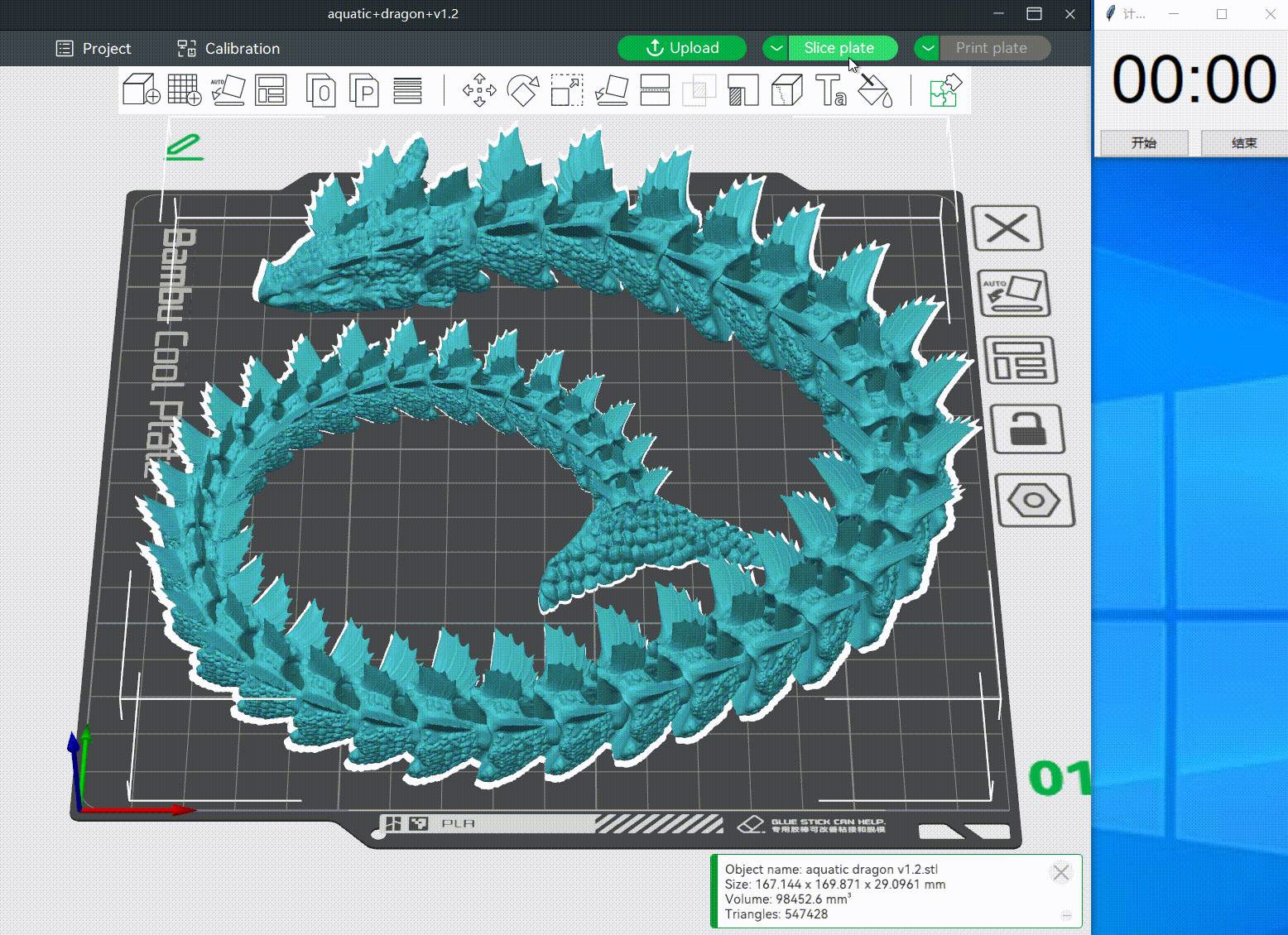

- Support nozzle diameter detection and nozzle hardness detection.
Support nozzle diameter detection and nozzle hardness detection
While the printer assignment is sent, Bambu Studio detects if the nozzle is qualified to print the filaments:
a. Check whether the diameter of the preset nozzle is the same as the diameter of the printer nozzle.
b. Check whether the hardness of the printer nozzle is suitable for the filaments used for printing.
This feature reduces the risk of nozzle clogging and ensures the nozzle's longevity by preventing excessive wear.
Note: The diameter and the hardness of the nozzle could be set on the printer's screen.
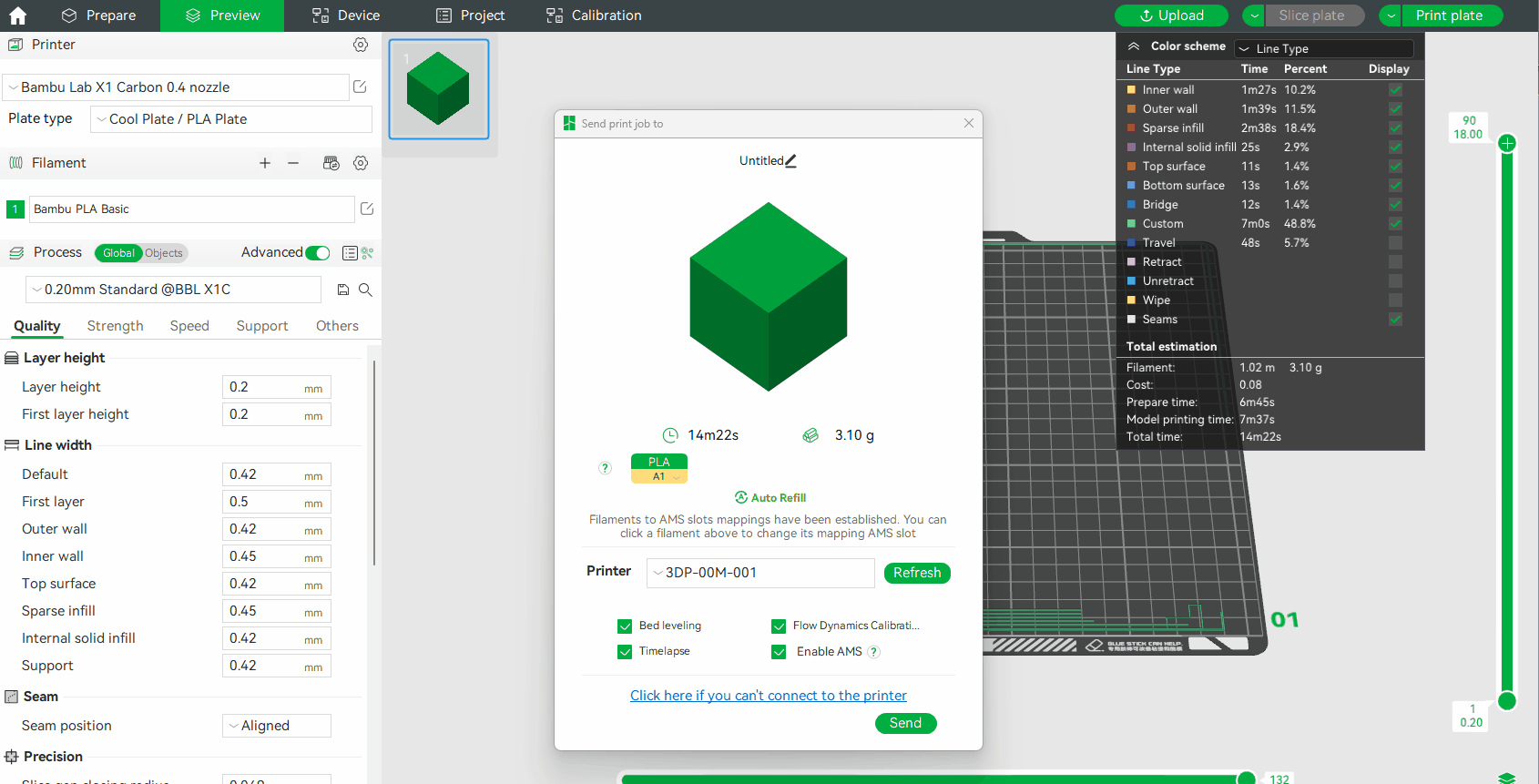
- Support device file management for P1P/P1S/A1 mini.
https://github.com/bambulab/BambuStudio/issues/2088
https://github.com/bambulab/BambuStudio/issues/2328
Bambu Studio now supports file browsing for P1/P1S/A1 mini. Please note that this feature relies on the printer firmware being upgraded to a new version(P1P/P1S v1.5 and A1 mini v1.2 to be released).
When this feature is enabled, you can browse and download timelapse video files on the printer through the studio, browse model slice files on the printer, and initiate printing; However, the downloading model function of these models on printers is still not supported.
-
Optimize the display of black models.
https://github.com/bambulab/BambuStudio/issues/2761 -
Add "top area threshold" in develop mode, which could improve top area quality in some cases, thanks @igiannakas.
In developer mode, there is a new parameter called "top area threshold." This determines the extent to which the area of the top layer is reduced to decide if the "only one wall on top" setting should be applied. Adjusting this threshold influences the contraction parameter. Increasing it can enhance the model's appearance. For instance, the left sphere shows some top layers with a single loop, leading to an uneven top surface. In contrast, the right sphere, with fewer top layers, presents a more refined shape.
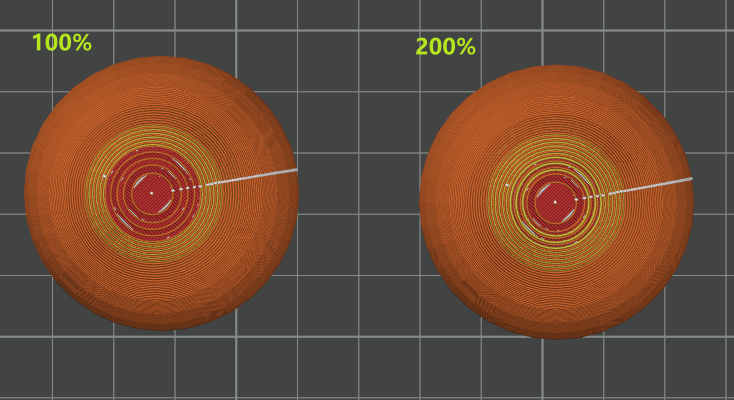
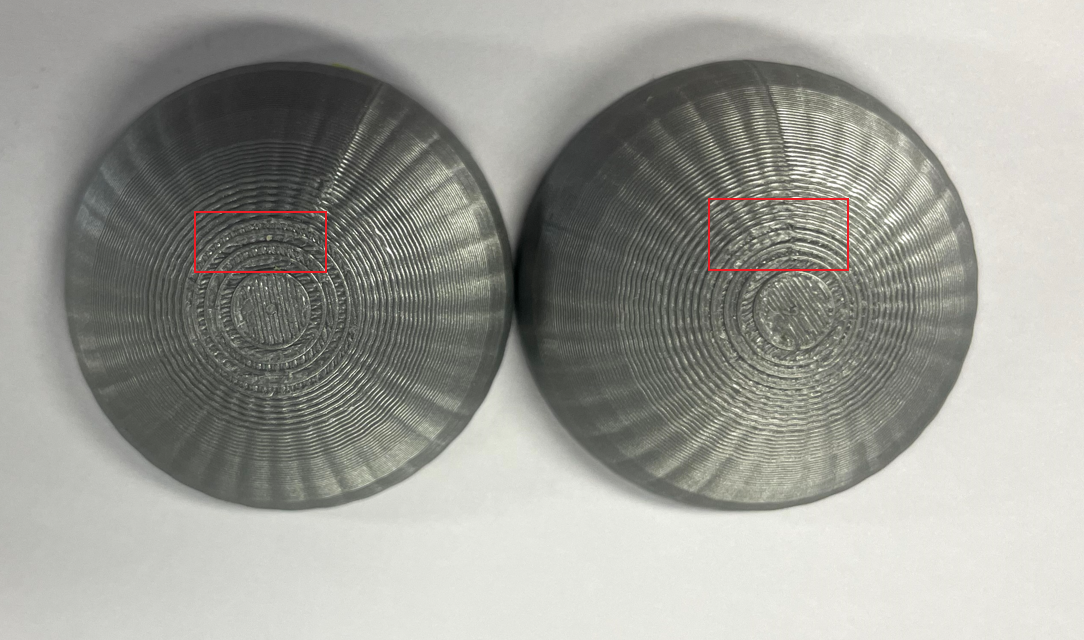
- Add Tree Organic as a new support style. This feature is picked from PrusaSlicer. Thanks to PrusaSlicer.
https://github.com/bambulab/BambuStudio/issues/797
https://github.com/bambulab/BambuStudio/issues/1785
https://github.com/bambulab/BambuStudio/issues/2420
- Improve the connection of the patches.
When using a multi-material painting tool, there is now an option to enable the interlocking of the painted patches with the neighboring segments. This improves the connection of the patches. This function is picked from PrusaSlicer, thanks to PrusaSlicer.
Refer to the figure below for the parameter's location. This parameter's value indicates the embedding depth for odd-numbered layers, with a value of 0 deactivating this feature.
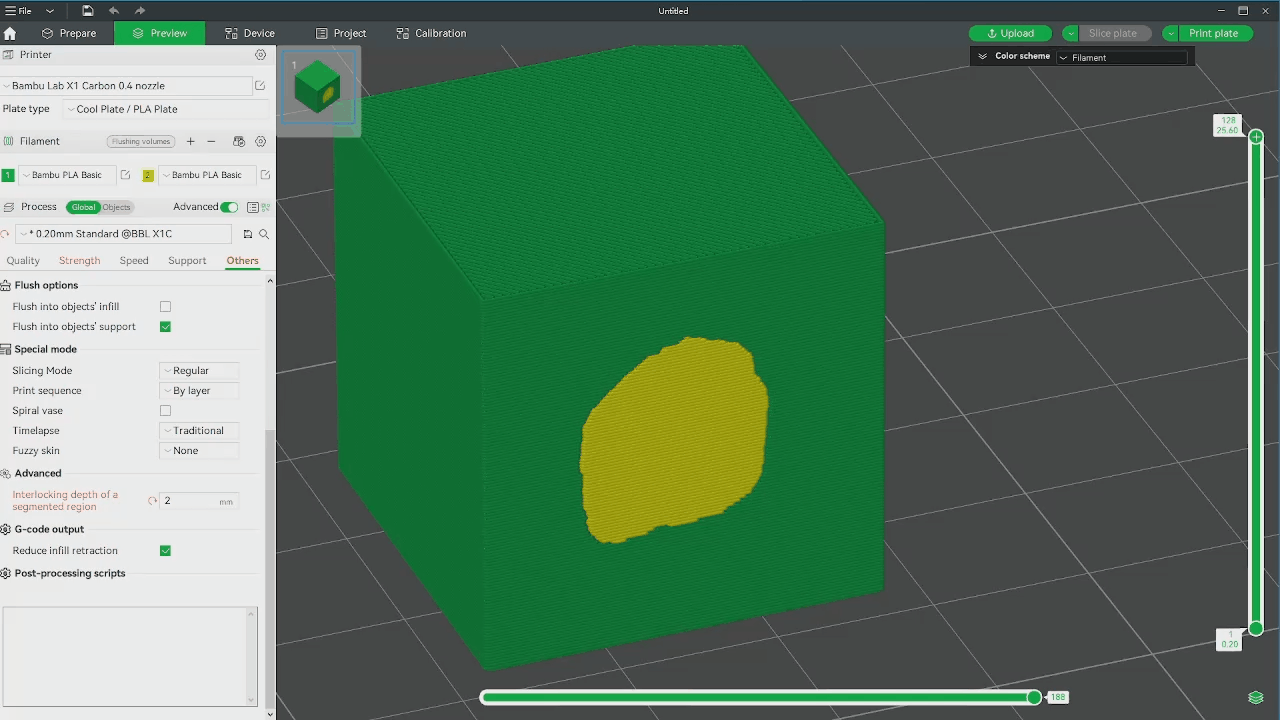
- Support to search model by name on the object list, and hotkey is Ctrl + F.

- Add "Auto Bed Type" function.
Studio now remembers the last selected build plate for a specific printer model. As demonstrated in the gif, this feature is enabled by default. For instance, the default bed type for the X1 machine is the cool plate, but if you manually change the bed type and later switch back from another machine, the X1 will revert to the bed type you chose previously.
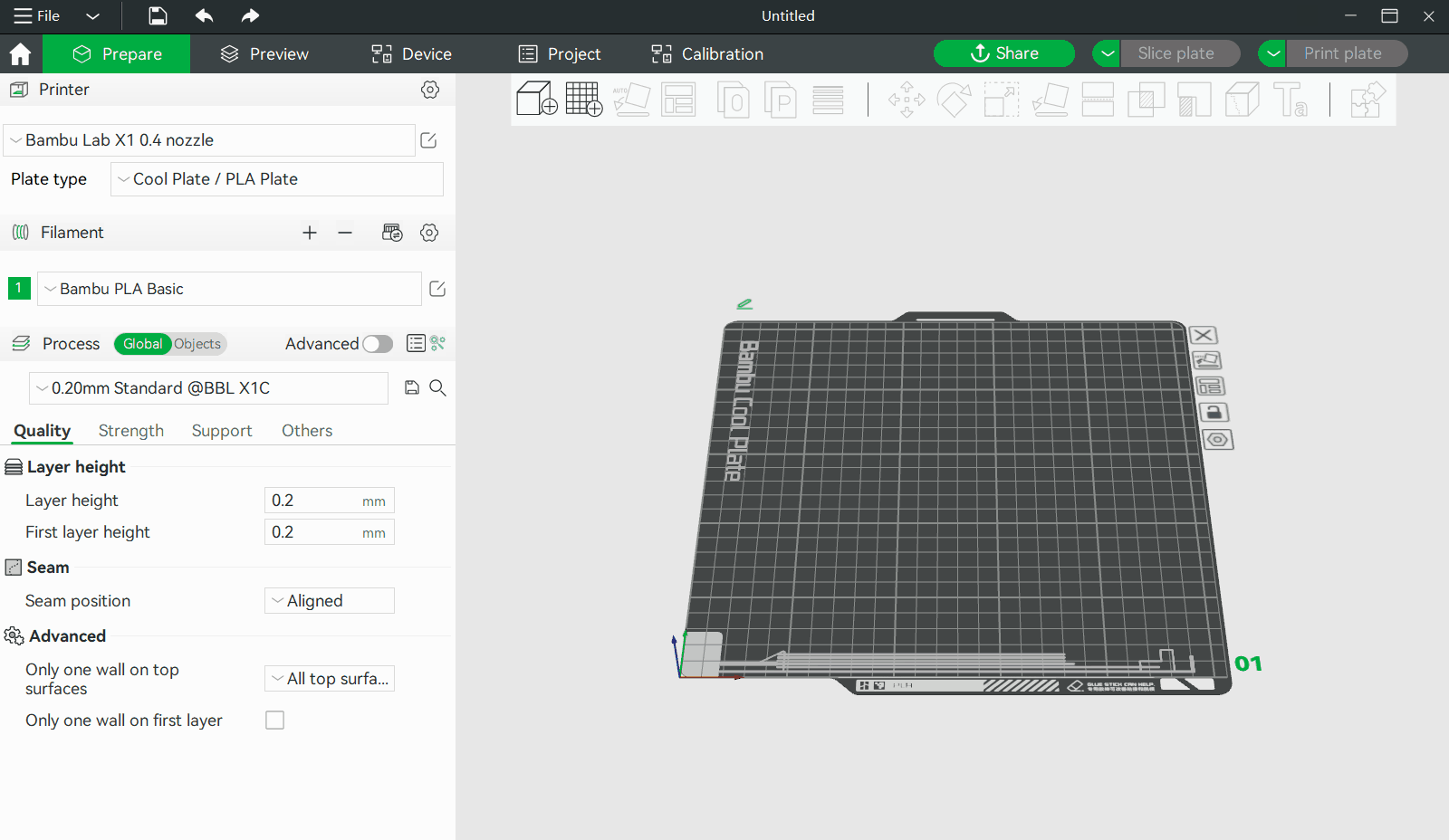
- Add the "best object position" parameter to allow users to define the optimal position to put the model.
The parameter could be modified in the printer settings, and auto-arrange will put the model in the position set. We have set the different best positions for the A1 mini and X1 series.
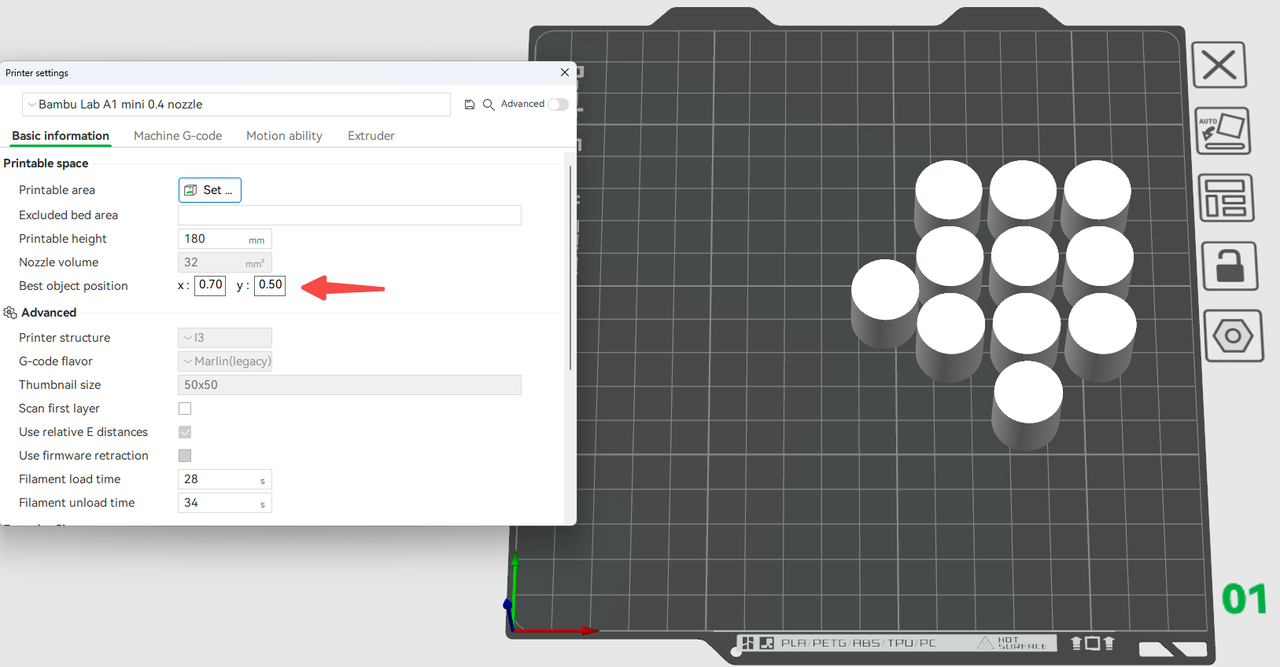
- Add an option named "avoid interface filament for base" to avoid support interface filaments from printing support base.
This parameter is accessible in develop mode, which helps prevent the issue of support collapse that can occur when using filaments with low adhesion for printing the support structure.

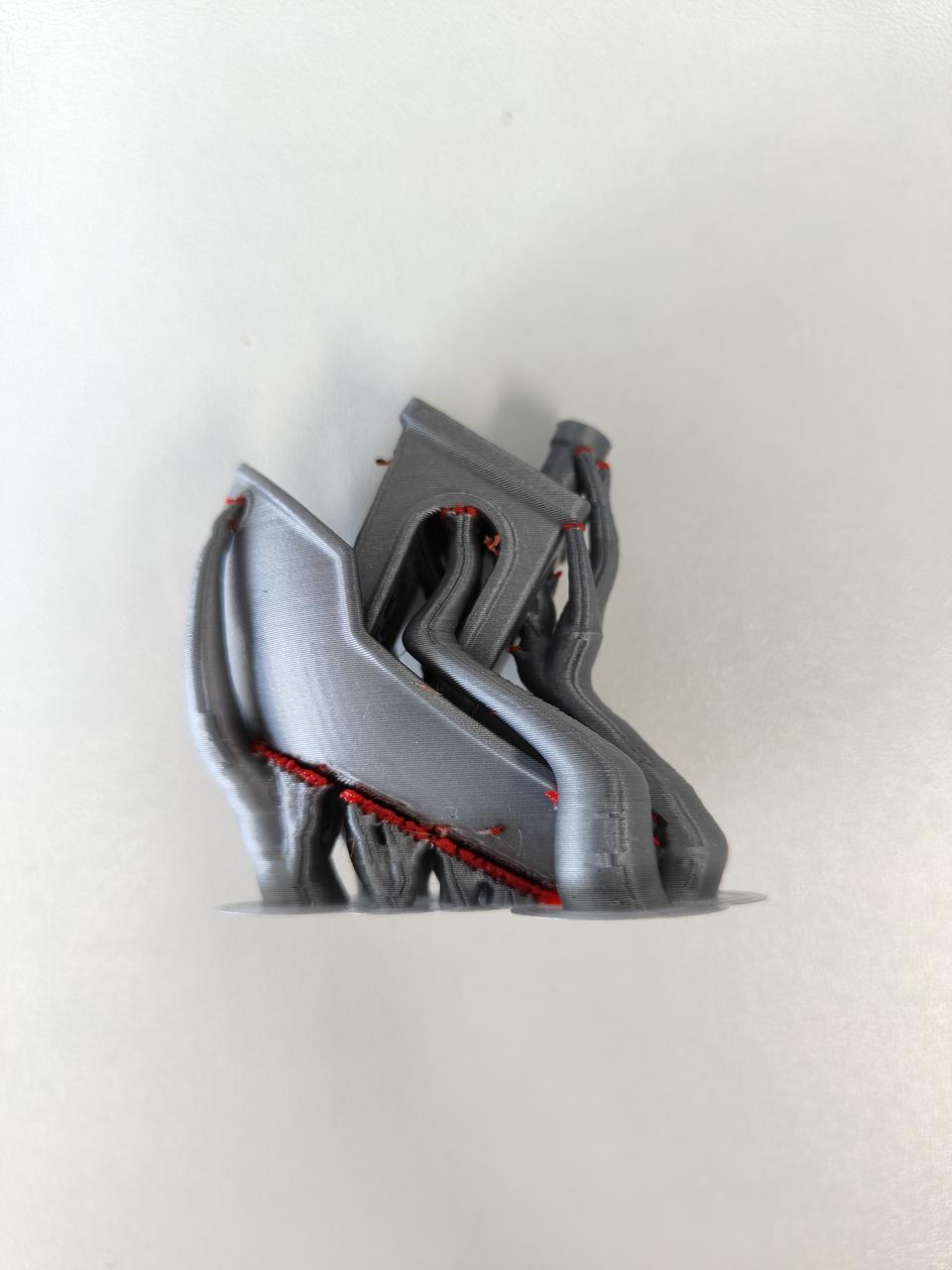
- Mouse following and specifying the initial position in the painting of the height range.

-
Add more layer height profiles for P1P's 0.2, 0.6, and 0.8 mm nozzles.
-
Add the "small perimeter" parameter to the speed list. The feature is picked from PrusaSlicer and OrcaSlicer. Thanks to them.
https://github.com/bambulab/BambuStudio/issues/735
https://github.com/bambulab/BambuStudio/issues/2221
- Allow more filaments of different printing temperatures to be put on the same plate by auto-arranging.
Previously, our auto-arranging feature limited the number of different filament types that could be placed on the same plate, based on their printing temperatures. For instance, PLA and PETG objects wouldn't be arranged together because their printing temperatures differ by more than 20 degrees.
We've now relaxed this limitation. Filaments are categorized as "low temperature" (like PLA, TPU, etc.), "high temperature" (such as ABS, PC, etc.), and "compatible temperature" (like PETG, etc.). The only restriction is that low and high-temperature filaments can't be placed on the same plate. Therefore, PLA and PETG objects can now be arranged together.
- Change the position of the revert button to avoid clicking accidentally.

- Add Bambu TPU 95A HF filament.
- Add wipe tower weight summary in gcodeviewer.
https://github.com/bambulab/BambuStudio/issues/1167
https://github.com/bambulab/BambuStudio/issues/2576 - Support to edit plate names on the object list.
- Support to set ironing angle.
The ironing angle is the angle between the direction of the infill and the ironing. This feature enables users to adjust the angle between the ironing and the infill direction, allowing for smoother ironing results.
- Put daily tips on slicing the progress bar.
- Enhance the visibility of dark models in the status panel interface on dark mode.
- Change the clone hotkey to Ctrl + M.
- Use canonical mine-type for 3mf files, thanks @Bastien Nocera.
- Add Support for Creality 3D Printer Models K1 and K1 Max. Thank @izonex.
¶ Bugfix
- Fix the bug of skipping the change filament while printing by object.
https://github.com/bambulab/BambuStudio/issues/2776 - Fix the load 3mf from disk fail issue.
https://github.com/bambulab/BambuStudio/issues/2324
https://github.com/bambulab/BambuStudio/issues/2696
https://github.com/bambulab/BambuStudio/issues/2258
https://github.com/bambulab/BambuStudio/issues/2246
https://github.com/bambulab/BambuStudio/issues/2209 - Fix occasional Crash when syncing user presets from the cloud during app startup.
https://github.com/bambulab/BambuStudio/issues/2850 - Fix the crash on Mac while opening develop mode.
- Fix the issue of unclear display of transparent materials in light mode and unclear selection of transparent materials in dark mode.
- Fix occasional Crash when syncing user presets from the cloud during app startup.
https://github.com/bambulab/BambuStudio/issues/2850 - After successfully sending the printing task, when redirecting to the device page, the progress bar displays 100% instead of 0%.
- Fix possible floating interfaces of hybrid support.
- Fix the issue that tree support may pass through objects.
- Fix the issue that the first layer of tree support may get over extrusion with the Arachne wall generator.
- Fix possible floating tree supports.
- Show the cost while importing a gcode file.
- Fix that the "+" button in the height range is invisible in some languages.
https://github.com/bambulab/BambuStudio/issues/2203 - Fix that slice with a customized Change Filament Gcode may cause a crash .
- Fix crash at switching dark mode or changing screen DPI.
- Fix that the speed value in the preview is not correct if the travel option is checked.
https://github.com/bambulab/BambuStudio/issues/2513 - Fix crash when pressing Enter on the height range modifier in Linux.
https://github.com/bambulab/BambuStudio/issues/2481 - FIX Misplaced message when opening an A1mini-profile with “print by object”.
https://github.com/bambulab/BambuStudio/issues/2803